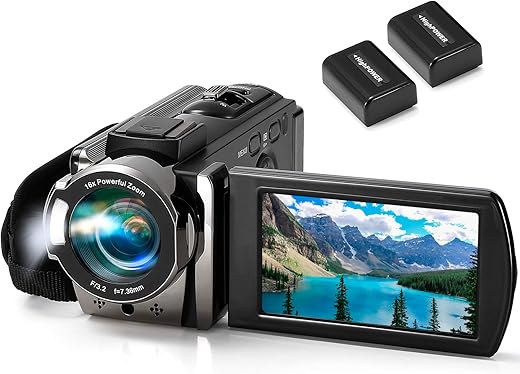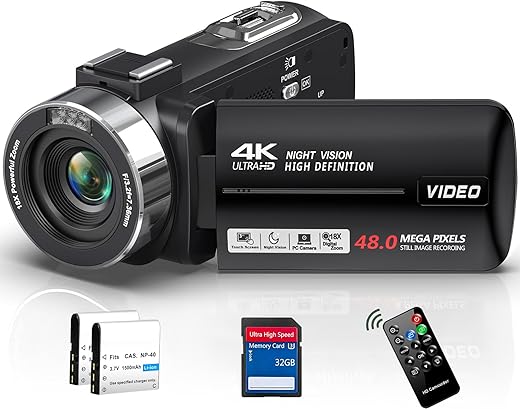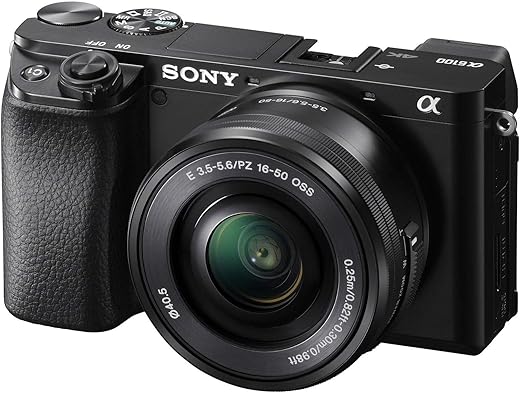When choosing a camcorder, understanding the differences between various models can greatly influence your decision. In this comparison, I will explore two distinct options: the Full HD Camcorder and the 128GB HD Pocket Camcorder. Both serve the purpose of capturing high-quality video, but they differ in features, portability, and storage capacity. By examining these aspects, I aim to provide a clear perspective on which camcorder might better suit specific recording needs.
**Home Recording
The Full HD 1080P Camcorder offers versatile features such as a 24MP image resolution, 16X digital zoom, and a 270-degree rotating LCD, making it ideal for capturing high-quality videos and images. With a pause function for seamless editing and the ability to record while charging, this compact device ensures uninterrupted performance for all your recording needs.
Adventure Recording
The 128GB Pocket Camcorder offers full HD 1080P video recording with a 180° rotatable lens, making it versatile for various situations such as outdoor activities and professional use. Equipped with a 1.4-inch screen for real-time playback and up to 7 hours of recording time, this compact device ensures you capture every important moment with clarity and ease.
Full HD Camcorder
Video Resolution
1080P at 15fps
Screen Size
3.0 inch LCD
Battery Life
60 to 90 minutes (2 Lithium Ion batteries)
Storage Capacity
Supports up to 128GB SD/SDHC card (not included)
Portability & Design
Larger size, weighs 1.17 pounds
128GB HD Pocket Camcorder
Video Resolution
True FULL HD 1080P
Screen Size
1.4 inch LCD
Battery Life
Up to 6 hours (1 Lithium Polymer battery)
Storage Capacity
Comes with 128GB built-in memory
Portability & Design
Compact design, weighs 5.6 ounces
Full HD Camcorder
128GB HD Pocket Camcorder
Full HD Camcorder
128GB HD Pocket Camcorder
Side-by-side comparison


Comparison Table
Unique Selling Points (USPs)
Video Camera Camcorder
- High Resolution: 24 MP photography capability for superior image quality.
- Extended Zoom: 16X digital zoom allows capturing distant subjects clearly.
- User-Friendly Interface: Large 3.0-inch LCD screen with 270-degree rotation for flexibility in shooting angles.
- Two Batteries Included: Ensures extended usage without the worry of running out of power.
128GB Pocket Camcorder
- Extensive Storage: Built-in 128GB allows for hours of recording without a need for additional cards.
- True HD Resolution: Produces sharp video quality for professional needs.
- Compact Size: Lightweight design makes it perfect for travel and on-the-go recording.
- Rotatable Lens: 180° lens rotation for versatile angle capture.
Similarities
- Both cameras offer Full HD 1080P video recording.
- They come equipped for audio recording capabilities.
- Each camera is designed to cater to different types of recording needs, from outdoor activities to general videography.
Pros and Cons
Video Camera Camcorder
Pros:
- High megapixel count for quality photos.
- Larger display screen for easy viewing.
- Versatile 16X digital zoom.
Cons:
- Bulkier than pocket camcorders, impacting portability.
- Frame rate may not suffice for fast-moving subjects.
128GB Pocket Camcorder
Pros:
- Extensive built-in storage for convenience.
- Lightweight and compact for easy transport.
- Rotatable lens for unique capture angles.
Cons:
- Smaller display screen limits viewing capabilities.
- Lacks detailed zoom specifications.
Conclusive Assessment
Although both products cater to different user needs, the Video Camera Camcorder emerges as a clear winner for consumers who prioritize photography and broader functionality, particularly with its high resolution, zoom capability, and larger display.
On the other hand, the 128GB Pocket Camcorder stands out for those needing convenience and extensive storage for continuous recording, making it ideal for travel and work scenarios.
Final Summary
In summary, the choice between these two cameras ultimately depends on individual preferences and requirements. For users seeking high-quality imaging and versatile recording features, the Video Camera Camcorder is the recommended option. Conversely, if you’re looking for something portable with ample storage for continuous usage, the 128GB Pocket Camcorder is the way to go. Assess your specific photography or videography needs to select the ideal product that suits your lifestyle.
Exploring Innovative Mini Camcorder Options
Guidelines for Comparing Mini Camcorders
When it comes to selecting the right mini camcorder, the market offers a broad range of options. Understanding the key factors and features can greatly assist you in making an informed choice. This guide outlines essential guidelines and key points to consider when comparing products in the Mini Camcorder category.
1. Resolution
Resolving power is one of the most prominent aspects to evaluate:
- Full HD (1080p): Suitable for most casual videography; provides sharp, clear images.
- 4K Ultra HD: Offers better detail for professional-grade video.
- Standard Definition (SD): Might suffice for simple recording purposes but lacks clarity.
2. Storage Capacity
Storage options vary, greatly impacting your recording time:
- On-board Storage: Sizes typically range from 16GB to 128GB.
- External Memory Card Support: Look for models that support MicroSD cards for extended storage space.
- Recording Time Estimate: Factor in the bitrate of the video to determine how long you can record with the available storage.
3. Portability and Design
The size and weight of a camcorder can affect usability:
- Compact Size: Ideal for travel; easily fits in bags or pockets.
- Weight: A lighter camcorder is typically easier to hold for extended periods.
- Ergonomics: Consider comfortable grip design for better handling during use.
4. Battery Life
Battery performance is crucial during usage:
- Average Recording Time: Evaluate how long the battery lasts during continuous recording.
- Recharge Options: Investigate if the camcorder supports portable chargers or quick charging features.
- Spare Battery Availability: Determine if it’s easy to purchase additional batteries if needed.
5. Video Quality Features
Advanced features can enhance overall video quality:
- Optical vs. Digital Zoom: Optical zoom retains quality while digital zoom can degrade footage.
- Stabilization Technology: Look for features like electronic or optical image stabilization to reduce shaky footage.
- Low-Light Performance: Consider models that perform well in low light conditions if you plan to shoot in varied environments.
6. Connectivity Options
Modern camcorders often come with varied connectivity features:
- Wi-Fi/Bluetooth: Facilitates easy sharing or transferring of videos to devices.
- HDMI Output: Allows connection to TVs or external monitors for playback.
- USB Ports: Necessary for charging, firmware updates, or connecting to computers.
7. Additional Features
Evaluate additional functions that might enhance your usage:
- Audio Input Options: If using an external microphone is essential, check for dedicated ports.
- Display Type: Touchscreen interfaces allow for intuitive control; LCD screens should be clear and visible in different lighting conditions.
- Built-in Effects and Filters: Fun for casual users but check for ease of use and practicality.
Your Quick Guide to Mini Camcorder Queries
The key differences between Full HD camcorders and 128GB HD pocket camcorders primarily revolve around their design, features, and intended use cases.
- Resolution and Quality: Both camcorders feature Full HD 1080P resolution, which indicates that they can capture video at a high-definition quality. However, the specifications beyond resolution, such as frame rates and sensor quality, can differ between models, affecting overall video clarity and performance.
- Recording Capacity: The 128GB pocket camcorder is designed to support significant storage capacity, allowing for extended recording times without the need to frequently change storage media. This feature is especially advantageous for users who require long-duration recordings. In contrast, the Full HD camcorder does not mention similar storage specifications, which may imply that it relies on smaller capacities like SD cards.
- Portability: The pocket camcorder is typically more compact and lightweight, making it highly portable and user-friendly for on-the-go recording. It is ideal for activities such as travel or work, where ease of use and concealment may be priorities. The Full HD camcorder, while still portable, is generally larger and may be better suited for stationary productions or projects where quality and control over settings are paramount.
- User Interface and Features: The Full HD camcorder often includes features like a larger 3.0-inch LCD screen that supports more detailed playback and easier navigation through settings. Additionally, functionalities such as 16X digital zoom and 270-degree rotation enhance its versatility for various filming conditions. The pocket camcorder has a smaller 1.4-inch screen, which may limit playback quality but enhances its portability.
- Target Audience: The Full HD camcorder is tailored more toward amateur filmmakers or enthusiasts who may prioritize quality features for creative projects. Conversely, the pocket camcorder targets users needing an easy-to-use recording device for everyday situations, such as body-worn usage or casual documentation.
In summary, while both camcorders offer Full HD recording capabilities, they cater to different user needs through variations in size, storage, features, and intended use cases.









Is the pocket camcorder really that good? I need something portable for my travels.
Love the comparison! I think I might go for the 128GB one, more storage is always better!
Thanks for breaking down the differences! I’ve been confused about which camcorder to get.
Full HD is a must for me! Great for capturing family moments in top quality.